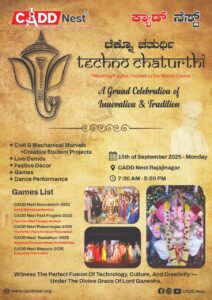In today’s digital age, Computer-Aided Design and Drafting (CADD) has become an indispensable tool across multiple industries. From architecture to engineering and manufacturing, the reliance on CADD is evident in the intricate designs and precise models used to create everything from skyscrapers to smartphones. For those with a knack for technology and an eye for detail, a career in CADD offers a wealth of opportunities.
Industries that Rely on CADD Professionals
Architecture
Architects heavily rely on CADD for creating detailed building plans, blueprints, and construction documents. The ability to visualize and manipulate architectural designs in a digital environment has revolutionized the industry.
Engineering
In engineering, CADD is used for designing mechanical components, electrical systems, and civil infrastructure. Engineers use CADD software to test and refine their designs, ensuring they meet safety and performance standards.
Manufacturing
CADD plays a crucial role in manufacturing by enabling the creation of precise models for products and machinery. These models are then used to guide the production process, ensuring accuracy and efficiency.
Automotive
The automotive industry uses CADD for designing everything from car bodies to intricate engine components. CADD allows for the simulation of vehicle performance and safety features before a prototype is built.
Aerospace
In aerospace, CADD is used to design aircraft, spacecraft, and related components. The high precision required in this field makes CADD an essential tool for engineers and designers.
Emerging Trends in CADD
Integration with BIM (Building Information Modeling)
BIM is becoming increasingly important in the construction and architecture industries. The integration of CADD with BIM allows for better collaboration and more efficient project management.
3D Printing and CADD
3D printing is revolutionizing manufacturing, and CADD is at the forefront of this trend. CADD models are used to create prototypes and final products through 3D printing, allowing for rapid iteration and customization.
Virtual Reality (VR) and Augmented Reality (AR) in CADD
VR and AR are transforming the way CADD professionals visualize and interact with their designs. These technologies provide immersive experiences, enabling designers to explore their creations in a virtual space before they are built.
Key Skills for Success in CADD Careers
Technical Skills
Proficiency in CADD software is essential. Familiarity with multiple tools can be advantageous, as different industries may prefer different programs.
Creativity and Innovation
A successful CADD professional must be able to think creatively and come up with innovative solutions to design challenges.
Attention to Detail
Precision is key in CADD work. Small errors in a digital model can lead to significant problems in the final product, so attention to detail is critical.
Communication and Teamwork
CADD professionals often work in teams, so strong communication and collaboration skills are necessary to ensure projects run smoothly.
Join Us at:
CADD Nest Training Centre Rajajinagar
1st & 2nd Floor, CADD Nest #1760, Dr Rajkumar Rd, opp. Navarang theatre, beside Sri Venkateshwara Car A/c, Mariappanapalya, Rajajinagar, Bengaluru, Karnataka 560010
CADD Nest Training Centre Basavanagudi
16, 1st & 2nd Floor, Siddaiah Complex, Mount Joy Road, Basavanagudi, Bull Temple Rd, near Basavanagudi, Bengaluru, Karnataka 560019






